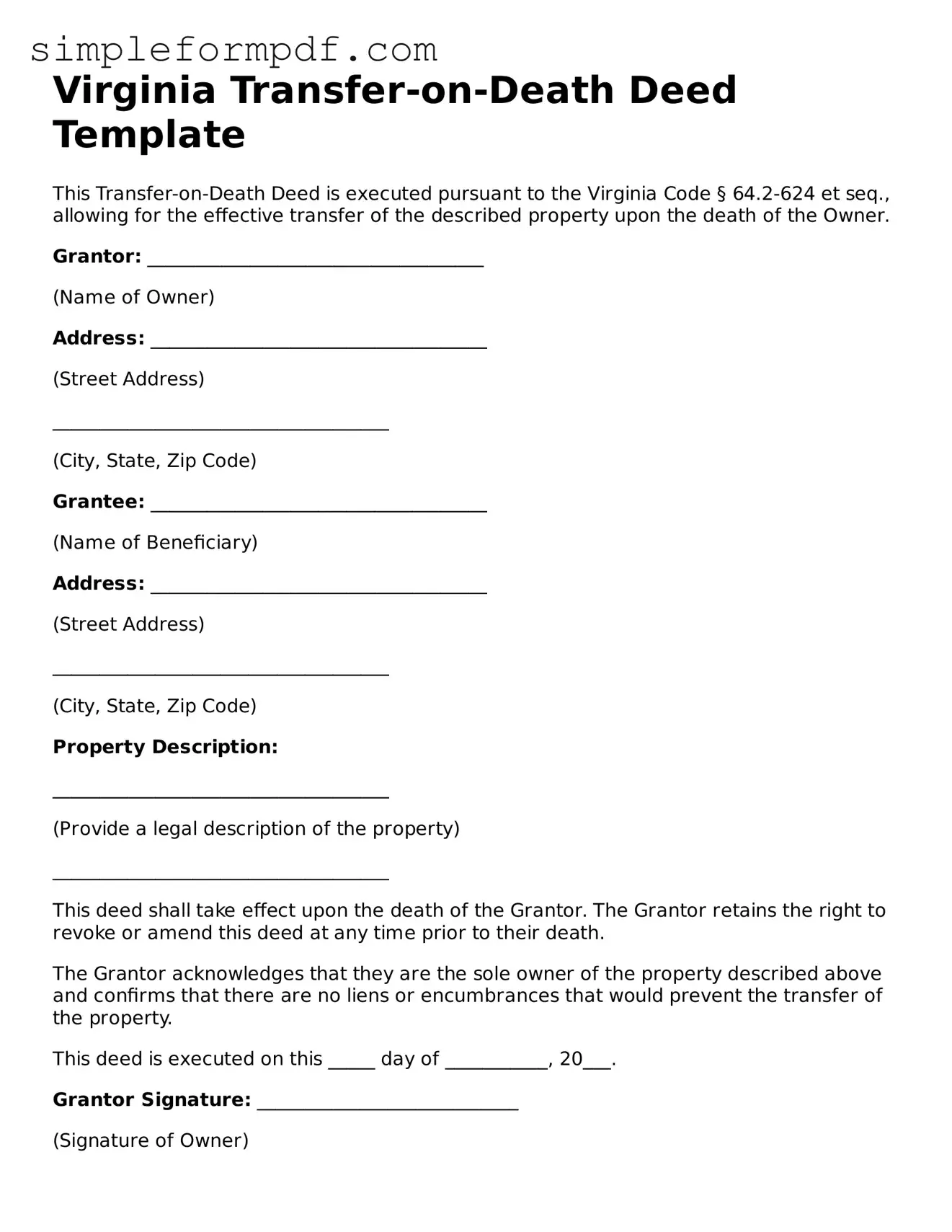Virginia Transfer-on-Death Deed Template
This Transfer-on-Death Deed is executed pursuant to the Virginia Code § 64.2-624 et seq., allowing for the effective transfer of the described property upon the death of the Owner.
Grantor: ____________________________________
(Name of Owner)
Address: ____________________________________
(Street Address)
____________________________________
(City, State, Zip Code)
Grantee: ____________________________________
(Name of Beneficiary)
Address: ____________________________________
(Street Address)
____________________________________
(City, State, Zip Code)
Property Description:
____________________________________
(Provide a legal description of the property)
____________________________________
This deed shall take effect upon the death of the Grantor. The Grantor retains the right to revoke or amend this deed at any time prior to their death.
The Grantor acknowledges that they are the sole owner of the property described above and confirms that there are no liens or encumbrances that would prevent the transfer of the property.
This deed is executed on this _____ day of ___________, 20___.
Grantor Signature: ____________________________
(Signature of Owner)
Witness Signature: ____________________________
(Signature of Witness)
Notary Public: _________________________________
(Name of Notary Public)
My commission expires: ______________________________
This document should be recorded in the appropriate Virginia county clerk's office to ensure the transfer is legally recognized. It is advisable to consult with a qualified attorney to review this document prior to execution.
